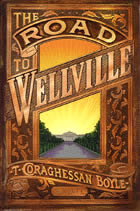Trader Joe’s corn flakes contain mixed tocopherols (Vitamin E); Kellogg’s adds the preservative BHT to its packaging. The makers of early Corn Flakes devised a solution that required no additives and shot the product’s popularity up like the puck in a strongman game at a Corn Belt county fair.
 Oddly enough, Corn Flakes were apparently invented as an antidote to masturbation, according to several accounts. A medical movement originating in the early 18th century declared that solitary sex led to illness, ranging from spinal tuberculosis and epilepsy to bad posture. A century later, these anxieties still held. John Harvey Kellogg believed that spicy foods and meats could encourage sexual arousal and lead to “self-pollution.” To avoid that horror, he advised a vegetarian diet with lots of cereal grains—which he was perpetually trying to coax into a palatable form. He was an influential figure who preached that cereal would save lives. “I get erections,” one patient confesses to a fictionalized Kellogg in the film adaptation of T.C. Boyle’s novel The Road to Wellville (which I’ve actually read and is far better than the movie). “I warn you sir,” the doctor replies. “An erection is a flagpole on your grave.”
Oddly enough, Corn Flakes were apparently invented as an antidote to masturbation, according to several accounts. A medical movement originating in the early 18th century declared that solitary sex led to illness, ranging from spinal tuberculosis and epilepsy to bad posture. A century later, these anxieties still held. John Harvey Kellogg believed that spicy foods and meats could encourage sexual arousal and lead to “self-pollution.” To avoid that horror, he advised a vegetarian diet with lots of cereal grains—which he was perpetually trying to coax into a palatable form. He was an influential figure who preached that cereal would save lives. “I get erections,” one patient confesses to a fictionalized Kellogg in the film adaptation of T.C. Boyle’s novel The Road to Wellville (which I’ve actually read and is far better than the movie). “I warn you sir,” the doctor replies. “An erection is a flagpole on your grave.”
Kellogg’s experiments with grains took place at his own oasis of health, the Medical and Surgical Sanitarium in Battle Creek, Michigan. “The vast resort offered the combined features of a medical boardinghouse, hospital, religious retreat, country club, tent Chautauqua, spa,” writes Gerald Carson in his 1957 book Cornflake Crusade, “all carried forward in an atmosphere of moral reform and asceticism.” At “The San,” physical health, spiritual health, and chastity could all be achieved through enemas, sinusoidal baths (a bath with the application of an electrical current), and proper diet. The problem with the Kellogg health diet was that it was tasteless and boring. One San dinner menu offered a choice of three entrées: “Protose Fillets,” “Nutolene,” or rice. Before the cereal boom, breakfast was “porridge or mush, graham gems, parsnips, tomato toast, ‘some kind of sauce,’ and a little milk.”
 Linda Vail with the Ingham County Health Dept. told 6 News, “There are a lot of questions about what they ate, where they were, that could eventually help us narrow down potentially how the whole thing got started.”
Linda Vail with the Ingham County Health Dept. told 6 News, “There are a lot of questions about what they ate, where they were, that could eventually help us narrow down potentially how the whole thing got started.”
